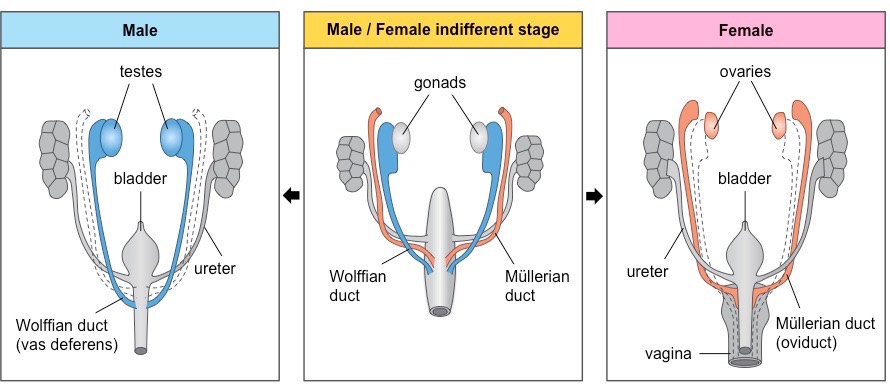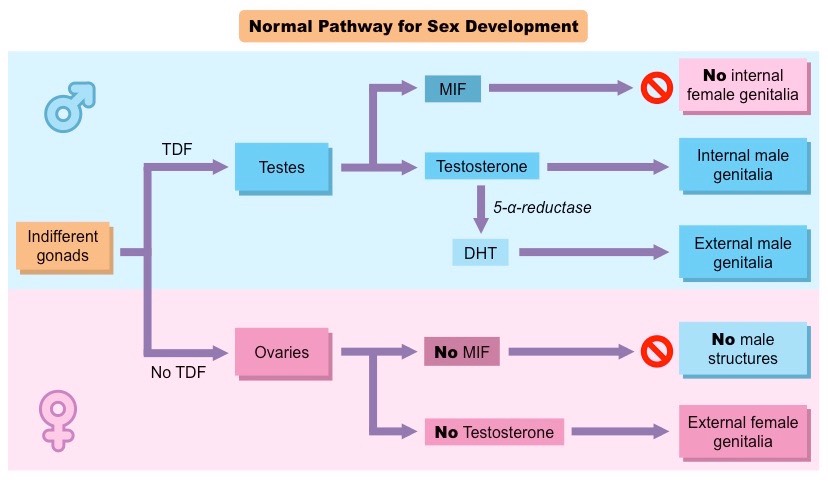The terms sex and gender are often used interchangeably, however there are key distinctions between the two terms:
- Sex describes the biological differences between males and females (e.g. genitalia, karyotype, hormone profiles, etc.)
- Gender describes the characteristics that society delineates as masculine or feminine
Normally, sex determination happens pre-natally and so infants are categorised at birth as either male or female
- The biological differences that exist between the sexes result from the presence or absence of a Y chromosome
- All embryos will develop as females unless genes present on the Y chromosome trigger male sex development
Males
- Males possess the SRY gene (on the Y chromosome), which synthesises testis determining factor (TDF)
- The testis produces a hormone called MIF (Mullerian Inhibiting Factor), which causes degeneration of female organs
- The testis also produces testosterone, which promotes the development of male sex characteristics
Females
- Females do not possess the SRY gene (do not have a Y chromosome), and so do not produce TDF or form testes
- Consequently, MIF is not produced and the female organs are allowed to develop (ovaries are formed)
- Ovaries do not produce testosterone and so female sex characteristics develop
Sex Determination

Sometimes errors occur during this prenatal development of sex characteristics, leading to issues in the assignment of gender
- Examples of conditions where sexual development does not follow standard genetic instructions include androgen insensitivity syndrome and guevedoces (late onset sex development)
Androgen Insensitivity Syndrome
- Individuals with androgen insensitivity syndrome do not respond to the production of testosterone
- Testosterone is responsible for the development of male sex characteristics (female sex characteristics develop in its absence)
- Males who suffer from androgen insensitivity do not therefore develop external male genitalia (despite having internal testes)
- Because they do not respond to testosterone, they develop female sex characteristics (such as enlarged breasts)
- Despite being genetically male (XY), these individuals physically resemble females and will associate with that gender
Guevedoces
- Guevedoces are girls who turn into boys at puberty
- Guevedoces possess a rare genetic mutation which prevents the synthesis of the enzyme 5-α-reductase
- This enzyme converts testosterone into dihydrotestosterone (DHT), triggering a hormone surge that develops male genitalia
- Without this enzyme, genetic males (XY) do not initially develop male genitals and instead develop as females
- A second hormone surge occurs with the onset of puberty, and it is at this point that the male genitals develop
Pathways for Sex Development

Pathway: Normal Sex Determination Androgen Insensitivity Guevedoces
